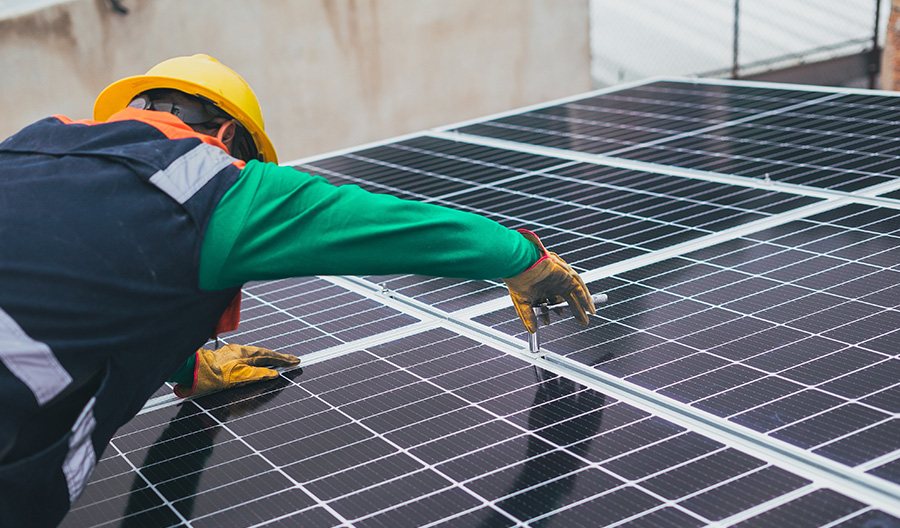What is the principle of photovoltaic power generation? What are the advantages and disadvantages?
Create_time:2021-08-18 Views:283
Principle of photovoltaic power generation
The sun shines on the semiconductor p-n junction to form a new hole electron pair. Under the action of the built-in electric field in the p-n junction, the hole flows from n area to p area, and the electron flows from P area to n area. After the circuit is connected, the current is formed. This is the working principle of photoelectric effect solar cell.
Light electricity direct conversion mode this mode is to directly convert solar radiation energy into electric energy by using photovoltaic effect. The basic device of light electricity conversion is solar cell. Solar cell is a device that directly converts solar energy into electric energy due to photovoltaic effect. It is a semiconductor photodiode. When the sun shines on the photodiode, Photodiodes will turn the light energy of the sun into electric energy and generate current. When many cells are connected in series or in parallel, they can become a solar cell array with relatively large output power. Solar cells are a promising new type of power supply with three advantages: permanence, cleanliness and flexibility Solar cells have long service life. As long as the sun exists, solar cells can be used for a long time with one-time investment; Compared with thermal power generation and nuclear power generation, solar cells will not cause environmental pollution.
The main specific principle of photovoltaic power generation is the photoelectric effect of semiconductors. When a photon irradiates on a metal, its energy can be fully absorbed by an electron in the metal. The energy absorbed by the electron is large enough to overcome the internal gravity of the metal and escape from the metal surface to become photoelectrons. The silicon atom has four outer electrons, If pure silicon is doped with atoms with five outer electrons, such as phosphorus atoms, it becomes an n-type semiconductor; If atoms with three outer electrons, such as boron atoms, are mixed into pure silicon to form a p-type semiconductor. When p-type and n-type are combined, the contact surface will form a potential difference and become a solar cell. When sunlight shines on the p-n junction, holes move from the P-pole region to the N-pole region, and electrons move from the N-pole region to the P-pole region to form a current.

Advantages of photovoltaic power generation
No risk of depletion; Safe and reliable, no noise, no pollution emission, absolutely clean; Not limited by the geographical distribution of resources, the advantages of building roof can be used; For example, areas without electricity and areas with complex terrain; Local power generation and supply without fuel consumption and transmission lines; High energy quality; Users are easy to accept emotionally; The construction period is short and the time to obtain energy is short.
Disadvantages of photovoltaic power generation
However, the production of solar panels has the characteristics of high pollution and high energy consumption, and the energy distribution density of irradiation is small, that is, it takes up a huge area; The energy obtained is related to meteorological conditions such as four seasons, day and night, cloudy and sunny; At present, compared with thermal power generation, the opportunity cost of power generation is high; The manufacturing process of photovoltaic panels is not environmentally friendly.
- Prev:Advantages of solar photovoltaic power generation
- Next:None

